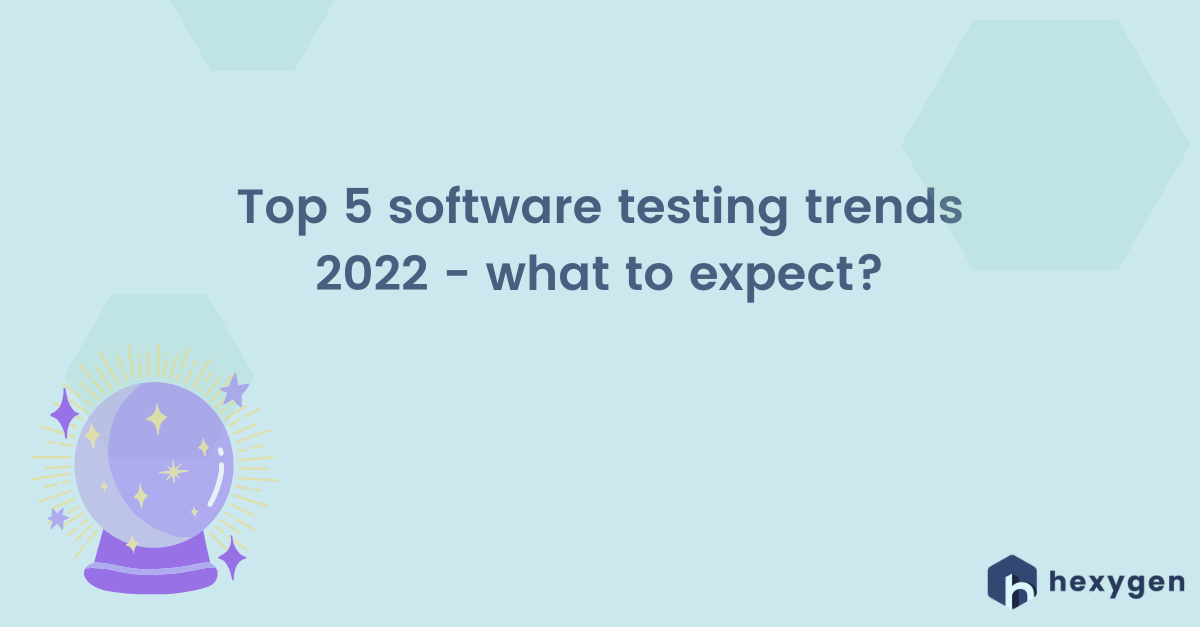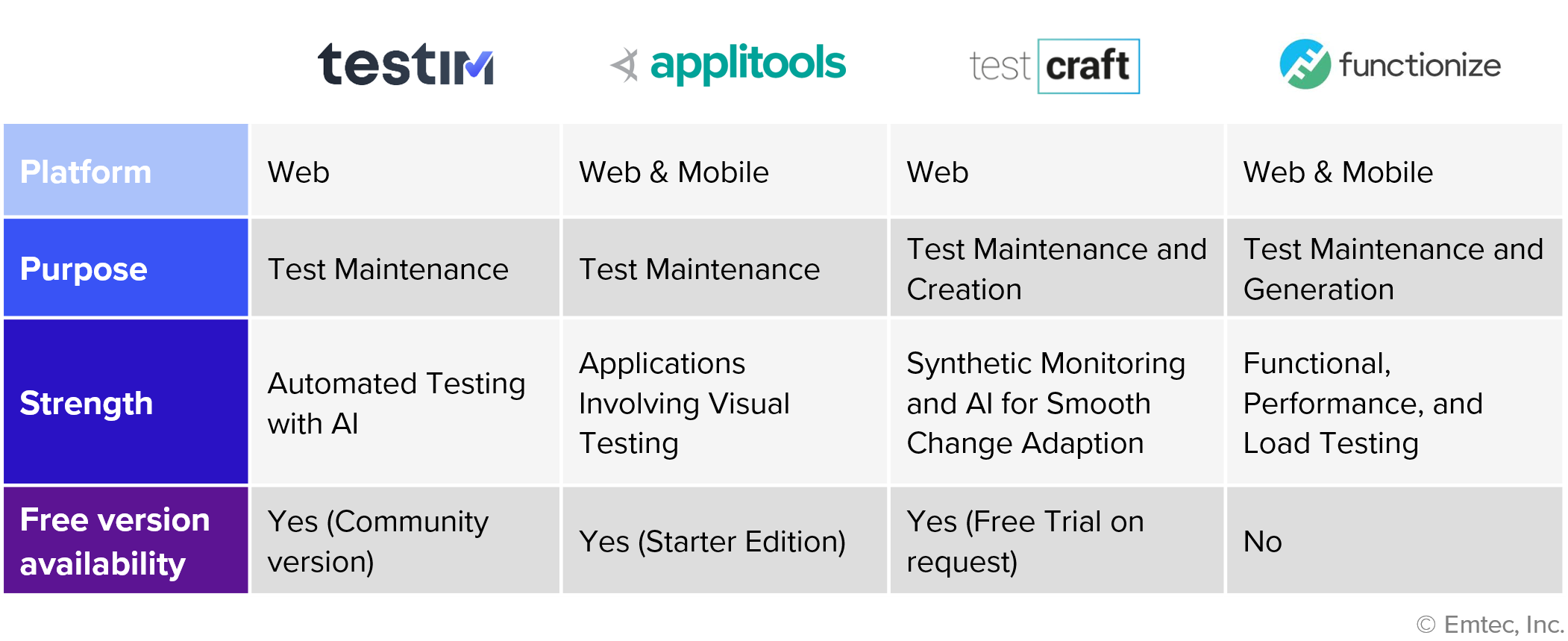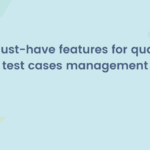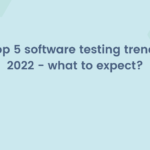
Let’s be honest. All predictions about the future from 2019 until now start from the question: is it going to be the AI year (again)? And the most common answer is: of course. But is it really that simple and what does it mean in the context of testing? Can we just assume that all the next years will be focused on Artificial Intelligence? From our observation, it’s only one part of the story. What’s more to come in 2022?
Effective test management gains more and more important as releasing the product without bugs should be a goal of each team working on it. If tests are run consistently with the rest of the software development steps, it results in savings in time and money. Companies are constantly optimizing tests and it’s important not to stay behind. We’ve picked out the top 5 trends that are going to become a thing in the coming year. Read on!
[#1 testing trend for 2022] Integration of tools
There are dedicated tools for everything: project management, communication, software development. As it’s not rather possible to create a tool that would be good for everything and answer the needs of everyone. This is where integrations, apps, and extensions step into the game. Thanks to them, the team gets to work together in one environment that is familiar to everyone and lets them stay up to date. This way, the changes made by one team member are instantly communicated to the others. Testers are able to inform developers about discovered bugs without sending them a dozen of messages. The risk of duplicated tasks drops to the minimum. Supervising work by managers becomes much easier. Building a single, consistent place to manage all processes is the modern solution that brings communication and project planning to a higher level.
Atlassian’s Jira is a great example of such a practice. This project management software is known by the majority of successful companies all over the world, so the interface isn’t strange even for the newcomers joining the project. In times of remote working, which without any doubt strongly influences all IT trends – this is extremely important. In Atlassian’s Marketplace, you can find extensions for all kinds of software: monitoring, coding, design, customer support, planning, and of course testing.
[#2 testing trend for 2022] Test automation level increase
Automation tools, such as for example Test Cafe, Selenium, or Test Complete support automation testers in continuous integration/continuous delivery (CI/CD). Nowadays they are frequently extended with new features to enable scripts, which turns out to be useful especially when it comes to functional and regression testing. The whole Agile, which is the most popular project management model requires making the processes more efficient and optimizing them. There’s nothing that can help more with this than the right tools and teams should be open to changing already used products for new, more functional ones.
There’s also a space for the Artificial Intelligence/Machine Learning case mentioned at the beginning of this article. It surely supports automated test management, as it’s able to scan big data and refine it into key information that is easier to analyze by the stakeholders. The mechanisms also simplify detecting bugs, duplicated test cases, and other testing objects. AI can scan the code and point out any errors, as well as suggest alternatives. In 2022 it’s smart to benefit from these advantages as much as possible. For now, the most popular examples of AI tools dedicated to testing are Testim and TestCraft for web apps or Functionize and Applitools for web & mobile products. Here are a brief table showing what you can expect from the tools:
[#3 testing trend for 2022] Safe software first
The technology can never be trusted 100%, especially when it comes to safety. In times of integration of tools and devices, the Internet of Things (IoT), and Artificial Intelligence, leaks of data are a serious risk that should be considered and taken care of in all kinds of businesses. Since the pandemic has started most companies moved their data to Cloud, so all team members would be able to work remotely from different places, even from around the world. It’s not a secret that 5-days-a-week-in-the-office times are gone and probably won’t be back. Storing information and performing technical activities in Cloud requires dedicated tools to stay safe and modern enterprises have no other choice than to provide them. With the help of the right equipment, it will be possible for administrators to manage data residency, set up proper permissions for the teams, implement authentication or encryption, secure deletion, and much more.
The consequences of neglecting safety are critical. This is why testing teams should bring extra attention to the permissions, data security, and avoid the slightest possibilities of omission in this subject. Protecting personal data will be a trend in 2022 and this one will hopefully stay for good.
[#4 testing trend for 2022] User Interface (UI) testing
The user-first approach never goes out of style. As machines are able to help with documentary stuff, QA teams should be focused on UI elements, design, and functionalities by making sure they work exactly as indicated in requirements gathered at the beginning of the software development process. The best way to do this is by performing manual testing. As indicated, tools and extensions can support testers’ work but still, they are not really able to define and rate the intuitiveness of a given product. What’s more, during software development unexpected features or changers can appear that won’t be detectable for a programmed mechanism.
Manual testers are able to deal with constant updates of testing objects, supervision of the process, evolutions, and instant fixes. This is why quality assurance teams should test products in cycles with the support of automated testing tools where it’s possible. Making sure that a human factor will be present during tests will result in customers’ loyalty and better performance of the final product right after the release.
[#5 testing trend for 2022] Augmented reality-based testing?
The question mark is not here by accident. As the development of the Internet of Things is constantly developing, it’s not hard to guess that it will continue to grow in 2022. This will result in the necessity of testing the product on several devices to make them respond to the needs of each potential user. Product full functionality on different resolutions, operating systems, and environments is a must-have. Tests that need to be performed to achieve these goals are called compatibility tests. As they are quite standard and can take a lot of time when there are lots of circumstances to test by the team, some people believe that Augmented reality-based testing (ARBT) will be a great solution and the answer to potential delays. It mixes augmented reality (an enhanced version of the real world achieved through the use of digital visual elements) and software testing. It would rely on adding new dimensions into the testers’ field of view.
For now, it sounds a little too futuristic, but who knows?
It’s smart to take care of your testing process before the others will. Our Requirements and Test Management for Jira can support at least 4 of the 5 upcoming trends which are tools integration, UI testing, test automation, and finally strengthened safety of the product. Try it out for free or contact our support team to learn more!



